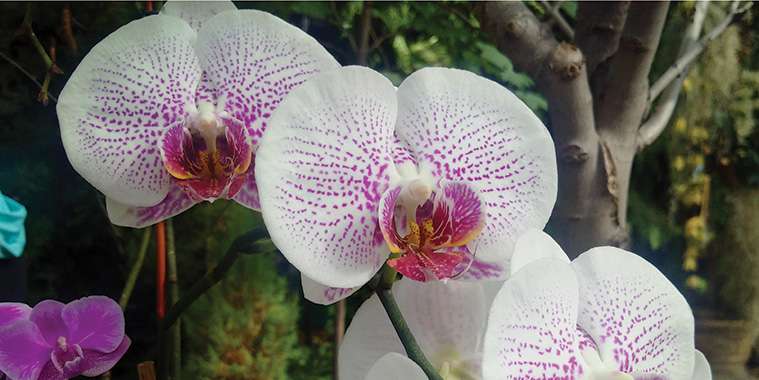By Dorothy Dobbie
Now we turn our attention indoors and pay some attention to the long suffering, much ignored houseplants that, at least for me, have been languishing indoors all summer. The orchids seem most forlorn, although, in fact, the more we leave them alone the generally happier they are.
Still, I never learn and every summer I take an orchid outside thinking to do it a favour only to have it succumb to the vagaries of the great outdoors. They are shade plants and no matter where I put them they always seem to get more sun than they need. Leaves shrivel and turn brown. They get attacked by curious bugs. They especially don’t like rain pelting down on their cores, which rot and cause the leaves to fall off. Such was the case with a pretty little orchid I have had for five years. I killed it, poor thing, so I am writing this to warn you not to do what I did. Don’t let water pool in the crown of the plant.
Still, properly protected, they can benefit from an outdoor holiday. Just take better care than I did and put them somewhere out of the rain!
In nature, orchids grow, what to us, is upside down with the roots exposed to the air and the leaves and flowers pointing downward. That is why you have to stake their flower scapes. The water runs out of the crowns and away from attachment to the stems.
In fact, the quickest way to kill an orchid is with your watering can. More orchids die of drowning than any other cause. Most of the species we buy at the local garden centre or grocery store are Phalaenopsis and they like their moisture in small quantities. Sometimes they are sold with instructions to water them by melting two or three ice cubes on their potting mix once a week.
These orchids like it slightly damp, not bone dry, though. Push your finger into the potting mix to feel for dampness before you water. Do fertilize with a 10 percent strength solution of 20-20-20 water soluble fertilizer, starting a couple of months after the plant has stopped blooming and while it is preparing to rebloom. Reblooming can take several months. Be patient
Light is another big issue. Phalaenopsis hate direct sunlight even in the house, so keep them in medium to bright, filtered light. Nor do they enjoy it too warm; 10 to 21 degrees is the happy range for most of the orchids we buy. And if you have a stubborn orchid that refuses to bloom, give it the cold shoulder for a few weeks. Put it away in a very cool place, as low as 10 to 12 degrees. Fertilize and water it lightly. When you bring it out again, chances are it will reward you with big, beautiful blossoms.
Potting medium should be changed every year or so; there are special mixes so you don’t have to be an orchid expert. Remember, the purpose of the medium is to anchor the roots and to give them some nourishment; they take their food from the air and water.
You may be tempted to mist your orchids. If you want to do this, be sure to have plenty of air circulation. You could be doing them more harm than good by setting up conditions for fungal disease. If you feel the air is too dry, set the orchids on a bed of stones or rack above some water. The humidity caused by evaporation will be good for them — and you!
Give your orchid some company. Place it near a grouping of other houseplants. It will absorb the moisture the companion plants expire as they grow.
It is just so rewarding to have these lovely plants rebloom under your tender care.
Dorothy Dobbie is the publisher of Canada’s Local Gardener magazine. Go to localgardener.net for Manitoba Gardener. You can call us at 204-940-2700 for subscriptions.



